Producer(s) Mike Wallis Release Cancelled Genre Platform game | Mode(s) Single-player Publisher Sega | |
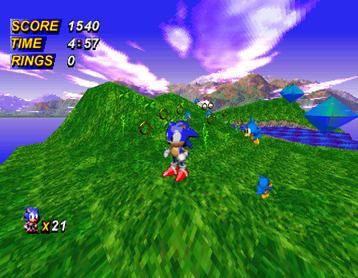 | ||
Programmer(s) Chris SennChris CoffinOfer Alon Artist(s) Ross HarrisFei ChangRichard WheelerStieg HedlundAlan Ackerman Similar Sonic the Hedgehog games, Sonic Team games, Platform games | ||
Sonic X-treme is a cancelled platform video game in the Sonic the Hedgehog series. Developed by Sega Technical Institute (STI), X-treme was designed to capitalize on the success of Sega's mascot character by being the first fully 3D Sonic game and the first original Sonic title developed for the Sega Saturn. During the course of development, several different styles of gameplay were tried and the plot of the game changed several times.
Contents
- Gaming mysteries sonic x treme saturn unreleased
- Premise
- Development
- After cancellation
- Legacy
- References
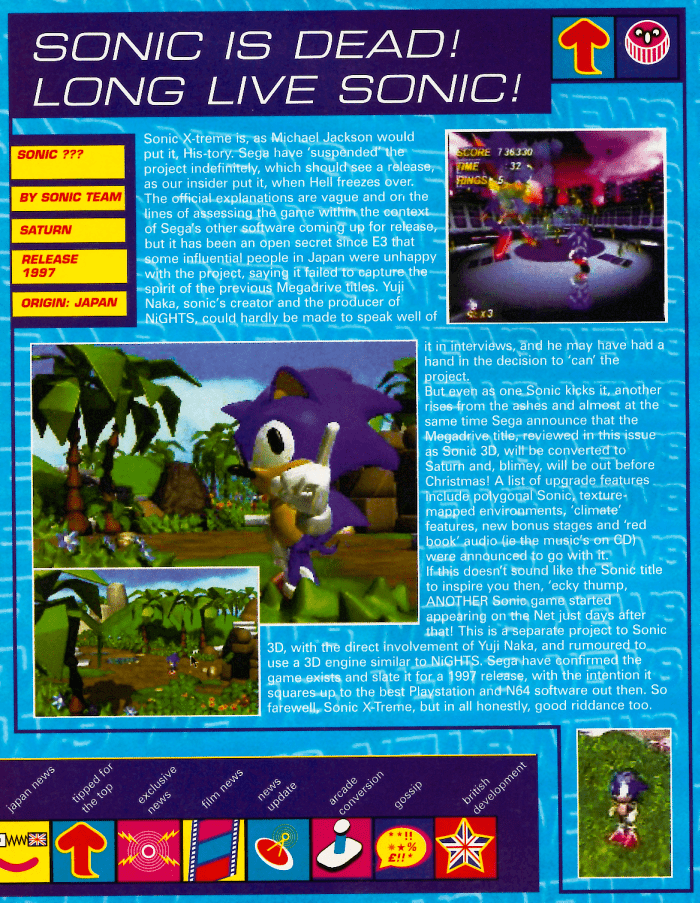
Originally pitched as a two-dimensional platform game for the Sega Genesis, the game was eventually moved to development on the Saturn and for Microsoft Windows, intended for release during the holiday season of 1996. However, X-treme became stuck in development hell after several incidents, including an unfavorable visit by Sega of Japan executives and issues with acquiring a game engine, made the deadline difficult to achieve. After two of the lead programmers for the project became ill, the game was eventually cancelled. The game's cancellation is considered an important factor in the Saturn's commercial failure, and reviewers and video game journalists have retrospectively considered the possibility of what Sonic X-treme could have done for the Saturn had it been released.

Gaming mysteries sonic x treme saturn unreleased
Premise
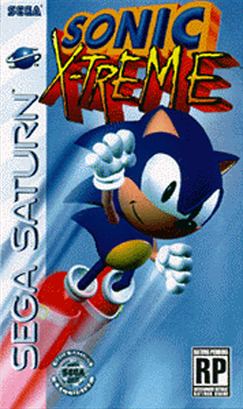
With the game constantly changing platforms, engines, and development teams, there were many loose storylines in consideration. According to developer Christian Senn, about six or seven story lines were considered during the three-year development timeframe. While originally based on the Saturday morning cartoon series, the main storyline used in promotion of the final game in magazines involved a Professor Gazebo Boobowski and his daughter, Tiara. The two were the guardians of the six magical Rings of Order, as well as the ancient art of ring-smithing. Gazebo and Tiara feared that Dr. Robotnik was after the six Rings of Order, and called on Sonic to get the Rings before Robotnik could. Dr. Robotnik kidnapped Gazebo after he requested Sonic's help, making it so Sonic had to retrieve both him and the Rings of Order. At one point in the development process, there was a possibility for 4 playable characters: Knuckles the Echidna, Tiara Boobowski, Miles "Tails" Prower, and Sonic the Hedgehog. Other characters intended to be included in the game were Nack the Weasel and Metal Sonic, who would have been a boss character in the final level. Various moves were added to the characters, such as a ring toss move for Sonic, which was left out of development.
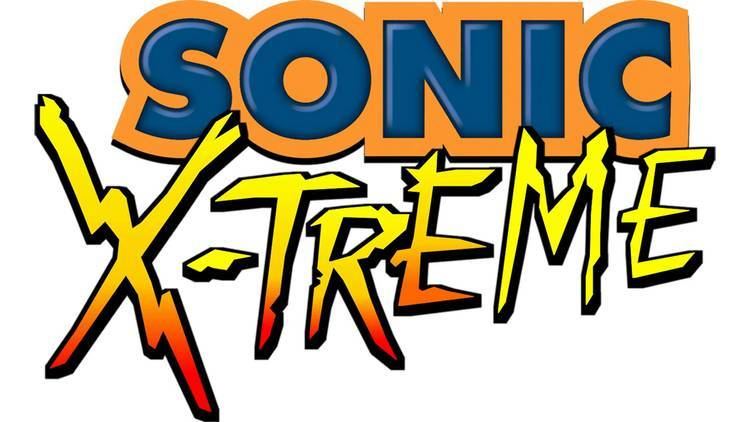
To further the traditional "Sonic formula", every level was designed in a tube-like fashion; Sonic would be able to walk onto walls, thus changing the direction of gravity and the rotation of the level itself, much like the special stages in Knuckles' Chaotix. In addition, an unusual, fish-eye lens-styled camera was put into place so players could see more of their surroundings at any given time.
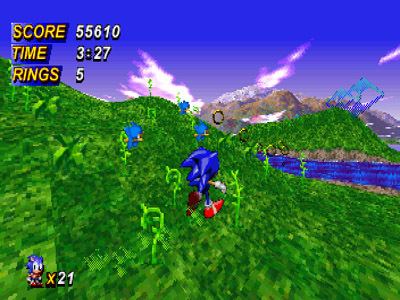
"3D Sonic is free to move around in a completely open 3D environment. Previously, on the 2D games, things were restricted to a very linear path, whereas now he can run around in the open without any restrictions to his path. The 360-degree rotation allows for new aspects to the gameplay. It means that Sonic can now do things like run from a wall onto the ceiling and explore lots of new hidden areas."
Senn has highlighted that the 3D gameplay still kept true to the Sonic series formula of collecting rings and speeding through game levels. Wallis also made mention of the game's overall layout, consisting of three acts per zone and varying in focuses on speed, exploration, and puzzle solving.
Development
Following the completion of Sonic & Knuckles in 1994, Sega began working on the next game in its Sonic the Hedgehog franchise, which was known in development as Sonic X-treme and would have been the first Sonic game to feature fully 3D graphics. Development of the game was started by Sega Technical Institute, a U.S.-based developer that had worked on several previous Sonic games, beginning on the Sega Genesis and subsequently moving to the Sega 32X. In its earliest conception, Sonic X-treme was designed for release on the Sega Genesis as a side-scrolling platform game, much like previous Sonic games for the system. As new consoles and the beginning of the 32-bit era were on the way, the game was later moved to the Sega 32X and was known at this stage under the development names Sonic 32X and Sonic Mars, after the development name "Project Mars" used for the Sega 32X. Even at this stage, the game's design changed wildly, including concepts such as an isometric viewpoint side-scroller. Eventually, however, development of the game was settled on a full 3D platform game.
As the game's design had changed significantly and evolved beyond the capabilities of the struggling Sega 32X, the game was shifted again to the Sega Saturn. The Saturn version of the project was initially developed separately by two teams in parallel starting in the second half of 1995. One team, led by designer Chris Senn and programmer Ofer Alon, was in charge of developing the main game for PC. The other team, led by Robert Morgan and including programmer Chris Coffin, worked on porting Senn and Alon's work to the Saturn while developing the "free-roaming, 'arena-style'" 3D boss engine. Senn and Alon's "fixed-camera side-scroller" with the ability "to move freely in all directions" was similar to Bug!, and featured a fish-eye camera system (called the "Reflex Lens") that gave players a wide-angle view of the action. As a result, levels appeared to move around Sonic.
In March 1996, Sega of Japan representatives, including CEO Hayao Nakayama, visited STI headquarters to evaluate the game's progress. They were unimpressed by the main game engine's performance on the Saturn, although Senn and Alon did not have an opportunity to demonstrate the PC version. Therefore, Nakayama requested the entire game be reworked around the boss engine. To achieve this in time for the strict December 1996 deadline, Coffin's team was moved into a place of isolation from further company politics and worked between sixteen and twenty hours a day. Then, in April, Bernie Stolar approached the STI team and inquired of Wallis what he could do to help the game meet its deadline. Wallis suggested that the game engine from Sonic Team's Nights into Dreams... would be helpful. Stolar agreed and acquired the engine. However, the engine's creator and lead programmer of the original Mega Drive Sonic games, Yuji Naka, reportedly threatened to leave the company if it was used. STI lost two weeks of development time from the loss of the Nights engine. A playable demo of the game was displayed at the May 1996 Electronic Entertainment Expo.
Senn and Alon had initially continued on with their game engine, undeterred by their work's original rejection, hoping to pitch it to Sega's PC division. However, it was eventually rejected again, prompting Alon to leave Sega. No part of the STI team worked in unity during development.
"We had artists doing art for levels that hadn't even been concepted out. We had programmers waiting and waiting and waiting until every minute detail had been concepted out, and we had designers doing whatever the hell they wanted. It was a mess, and because of the internal politics, it was even more difficult to get any work done."
By August, Chris Senn had become so ill that he was told he had six months to live—though Senn would survive this ordeal—and Chris Coffin came down with a severe case of pneumonia. With both Senn's team and Coffin's team crippled, Wallis was left with an incomplete X-treme and only two months before its deadline. At this point, he made the decision to cancel the game. Although Sega initially stated that X-treme had merely been delayed, the project was cancelled in early 1997.
After cancellation
With the cancellation of X-treme, Sega instead decided to concentrate on a port of the Genesis title Sonic 3D Blast, and Sonic Team's Nights into Dreams... for the 1996 holiday season. Sonic Team started work on an original 3D Sonic title for the Saturn, which eventually became Sonic Adventure for the Dreamcast. According to Naka, remnants of the project can be seen in the compilation game Sonic Jam. STI was officially disbanded in 1996 as a result of changes in management at Sega of America.
For many years, very little content from the game was ever released beyond screenshots that had been released to the media in promotion of the game prior to its cancellation. However, in 2006 a copy of a very early test engine was sold at auction to an anonymous collector who bought it for US$2500. An animated GIF image of the gameplay was initially released, and the disk image itself was leaked on July 17, 2007 after a fundraising project by the "Assemblergames" website community purchased the disc from the collector. In 2006, Chris Senn opened the "Sonic X-treme Compendium" web site and began revealing large amounts of the game's development history to the public, including videos of early footage, a playable character named Tiara, and a large amount of previously unreleased concept music related to the title. He also was given permission by Hirokazu Yasuhara, the level designer for the majority of the original 16-bit Sonic titles, to post level designs that were going to be put in the game. Senn, along with the community, announced intentions to recreate the game, but ultimately the project was canceled in January 2010.
In early 2015, fans from Sonic fansite "Sonic Retro" obtained the game's source code, polished it up into a playable build, and released it for download on the internet. The first release only features one level, the Jungle-themed level from the 1996 E3 promotional video, and remaining levels and demos were released during 2015.
Legacy
The Sonic X-treme debacle has been cited as a reason for the ultimate failure of the Sega Saturn. With the Sonic the Hedgehog series being attributed to much of the success of the company's prior system, the Genesis, and Sony and Nintendo both having flagship 3D platformers available early in the life cycle of their consoles (Crash Bandicoot and Super Mario 64, respectively), Sega was expected by fans to follow suit and produce an official 3D Sonic game. With the game's cancellation, the Saturn never did receive an exclusive Sonic platform game, but rather only the Genesis port of Sonic 3D Blast; Sonic Jam, a compilation of the 2D Genesis Sonic titles; and Sonic R, a racing game. Sonic's debut in a full 3D platform game was not until 1998, with Sonic Adventure as a Dreamcast launch title, well after the discontinuation of the Saturn.
Following the game's cancellation, journalists and fans have speculated about the impact a completed X-treme might have had on the market. David Houghton of GamesRadar described the prospect of "a good 3D Sonic game" on the Saturn as "a 'What if...' situation on a par with the dinosaurs not becoming extinct." IGN's Travis Fahs called X-treme "the turning point not only for SEGA's mascot and their 32-bit console, but for the entire company", although he also noted that the game served as "an empty vessel for SEGA's ambitions and the hopes of their fans". Dave Zdyrko, who operated a prominent website for Saturn fans during the system's lifespan, offered a more nuanced perspective: "I don't know if [X-treme] could've saved the Saturn, but ... Sonic helped make the Genesis and it made absolutely no sense why there wasn't a great new Sonic title ready at or near the launch of the [Saturn]". In a 2013 retrospective, producer Mike Wallis maintained that X-treme "definitely would have been competitive" with Nintendo's Super Mario 64. Websites such as Destructoid and GamesRadar have speculated the game could have been a source of inspiration for future games such as 2007's Super Mario Galaxy. Several journalists would also note similarities between X-treme and the 2013 game Sonic Lost World.
